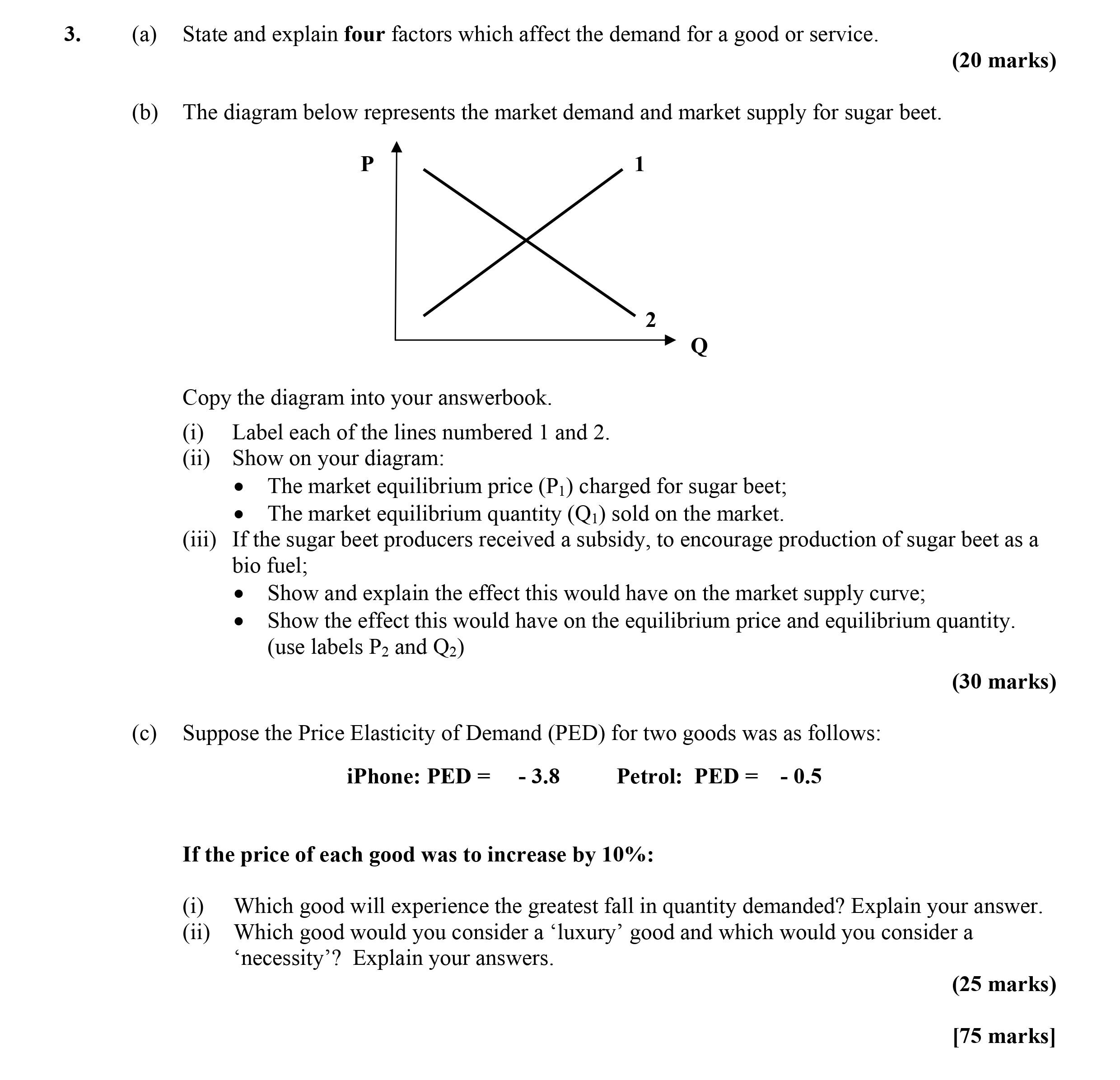Photo AI
3. (a) State and explain four factors which affect the demand for a good or service - Leaving Cert Economics - Question 3 - 2010
Question 3

3. (a) State and explain four factors which affect the demand for a good or service. (b) The diagram below represents the market demand and market supply for suga... show full transcript
Worked Solution & Example Answer:3. (a) State and explain four factors which affect the demand for a good or service - Leaving Cert Economics - Question 3 - 2010
Step 1
State and explain four factors which affect the demand for a good or service.
Answer
Several factors influence the demand for a good or service. Here are four key factors:
-
Price of the Good Itself: Generally, as the price of a good falls, the quantity demanded increases, as consumers perceive greater value.
-
Price of Complementary Goods: If the price of a complementary good rises, the demand for that good may fall. For example, an increase in the price of petrol can decrease the demand for large cars, which consume more petrol.
-
Prices of Substitute Goods: When the price of a substitute good increases, the demand for the original good tends to rise as it becomes more attractive. For instance, if the price of butter rises, the demand for margarine may increase.
-
Income of the Consumer: As consumers' income rises, their purchasing power increases, leading to higher demand for most goods. Conversely, during economic downturns, demand may decrease.
Step 2
Step 3
Show on your diagram: The market equilibrium price (P1) charged for sugar beet; The market equilibrium quantity (Q1) sold on the market.
Answer
Mark the equilibrium price at the intersection of the demand and supply curves, labeling it as P1.
Label the corresponding quantity on the x-axis as Q1.
Step 4
If the sugar beet producers received a subsidy, to encourage production of sugar beet as a bio fuel. Show and explain how this would affect the market supply curve.
Answer
The subsidy would lower production costs for sugar beet producers. This would shift the supply curve to the right, indicating an increase in supply at every price level. Label the new supply curve as New Supply Curve.
Step 5
Show the effect this would have on the equilibrium price and equilibrium quantity.
Answer
With the increase in supply, the new equilibrium price would be lower, labeled as P2, and the new equilibrium quantity would be higher, labeled as Q2. The graph should show the intersection of the new supply curve with the demand curve.
Step 6
Which good will experience the greatest fall in quantity demanded? Explain your answer.
Answer
The iPhone will experience the greatest fall in quantity demanded. Given its PED of -3.8, a 10% price increase would lead to a 38% fall in quantity demanded, whereas petrol, with a PED of -0.5, would only see a 5% decrease.
Step 7
Which good would you consider a 'luxury' good and which would you consider a 'necessity'? Explain your answers.
Answer
The iPhone is a luxury good due to its price elasticity of demand being higher than 1, indicating that consumers may forego purchasing it when prices rise. Petrol, on the other hand, is a necessity as it is relatively inelastic. Even with price increases, people still need petrol to commute and will continue buying it despite higher costs.
